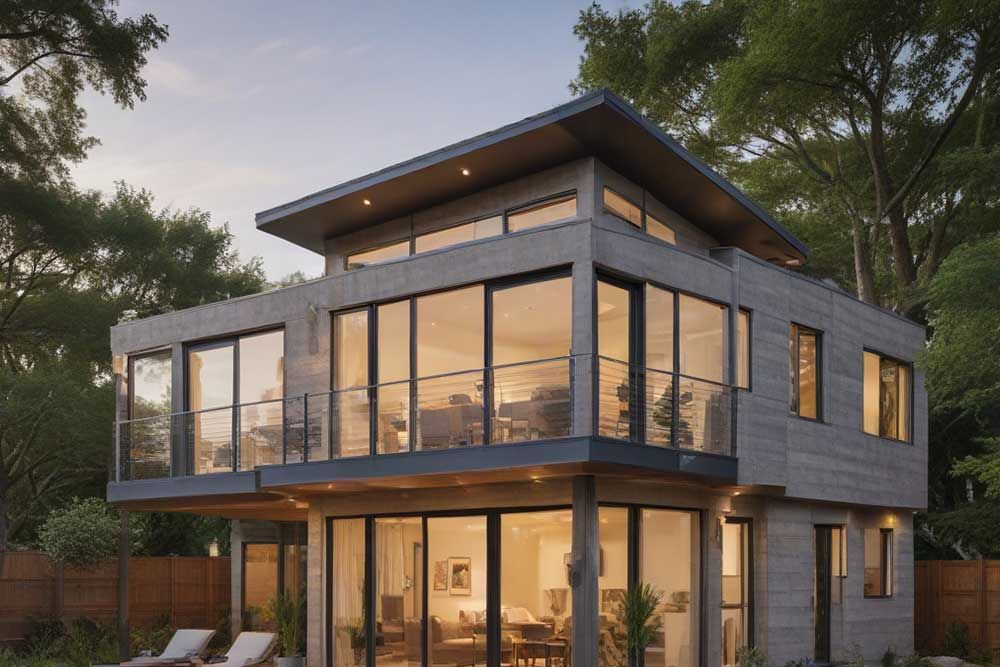In recent years, prefabricated or prefab homes have emerged as an affordable and environmentally friendly alternative to conventional housing units. Such houses stand out because they are manufactured in a factory setting and later transported to the homeowner’s location for assembly. This helps bring down construction expenses, lower material wastage, and speed up construction time. With some models priced as low as $20,000, prefab homes appeal to people seeking budget-friendly and sustainable housing solutions.
Types of prefab homes
Depending on the construction method, prefab homes can be categorized into different types. While searching for affordable prefab homes for sale, it is important to remember that aside from the type of home, various factors like its size, insulation, and materials used will significantly impact its final price.
1. Modular homes
These are among the most popular forms of prefab homes. The primary structures or boxes of these homes are built in factories and later transported to the site on flatbed trucks. After arriving on the site, a crane lifts these components (also known as modules) off the truck for the professionals to assemble them. In several cases, these prefab homes are mostly completed upon arrival at the location; all a homeowner has to do is assemble the parts. Some modular homes might even come with kitchen appliances and flooring in place. Others may arrive with some work left for the contractor to complete. Modular homes are ideal in areas where labor is expensive since much of the construction work happens in a factory, reducing on-site labor requirements.
2. Panelized houses
This is another type of affordable prefabricated homes one can look into. The outer walls of the house are put together on the site like a jigsaw puzzle. Sometimes, certain panelized homes might arrive with the doors and windows preinstalled. But, for others, the manufacturers will attach the windows and doors to the home once it arrives on the site. These homes are popular due to their ease of shipping and design flexibility.
3. Structural insulated panels (SIPs)
They are an increasingly popular option in the prefab construction industry. Typically, these panels comprise two layers of oriented strand boards (OSBs), which are insulated together using a layer of foam in between. These OSBs are intended to add strength to roofs and wall structures. This way of design eliminates the need for wood framing and protects the property from air leakage. SIPs are faster, easier to install, and more energy-efficient than most pre-built homes. It is a suitable choice for people who want an open plan for the interior of their home, as SIPs require fewer load-bearing interior walls.
4. Kit homes
Also known as catalog homes, kit houses are one of the oldest types of prefabricated housing. In this concept, buyers typically browse through a catalog to choose from various designs and options. The house is then manufactured in sections in a factory and later shipped to the location along with guidelines for assembly.
5. Steel frame houses
These housing units are supported by metal beams replacing wooden beams, resulting in better stability and sturdiness for the unit. These prefab houses are an affordable way to build strong, reliable homes without over-extending the budget. But, it is important to note that such homes often require more specialized tools and skilled professionals for assembly. Another advantage of choosing steel frame prefab homes is the lower risk of mold, pests, and weather damage.
6. Timber-frame homes
This form of prefab construction is practical, quick, and convenient. These homes promote energy efficiency due to the high thermal insulation properties of the wall structures. As the name suggests, these homes use large wooden beams, often from sustainable sources, and are manufactured in factories with the help of sophisticated machinery and techniques.
Timber frame houses were commonly built on the prairie in the olden times. But today, these types of prefab homes are being built in factories. Manufacturers now speed up the process with the help of sophisticated machinery and techniques. Besides, they are aesthetically pleasing and durable, often providing a rustic charm to a given space.
7. Bardominiums
These living spaces are the modern version of condos that look like barns. Such barn-like structures come with prefabricated components such as steel frames or other suitable metal kits. The cost of the structure will vary depending on the metal used in its construction. These homes are easy to install at the location and also offer floor plans and customization options.
Factors that influence the price of prefab homes
Prices for prefab homes in the country typically range between $80 and $200 per square foot. But, homeowners must note that the price of any given property will depend on factors such as size, customization, materials, and design complexity. While basic models can be found on the lower end of this spectrum, more elaborate designs with high-end finishes or larger footprints naturally drive up the pre-built home’s price. Factors such as the home’s location can also influence the final pricing. While eco-friendly or premium materials may raise the overall price, they also enhance the durability and energy efficiency of the space. Customization is another factor, as personalizing the layout or adding upgrades can quickly add to the total cost. There are several places in the country where potential homeowners can get a ready-built home on sale for affordable prices. They provide well-designed, sustainable options that don’t compromise on craftsmanship.
